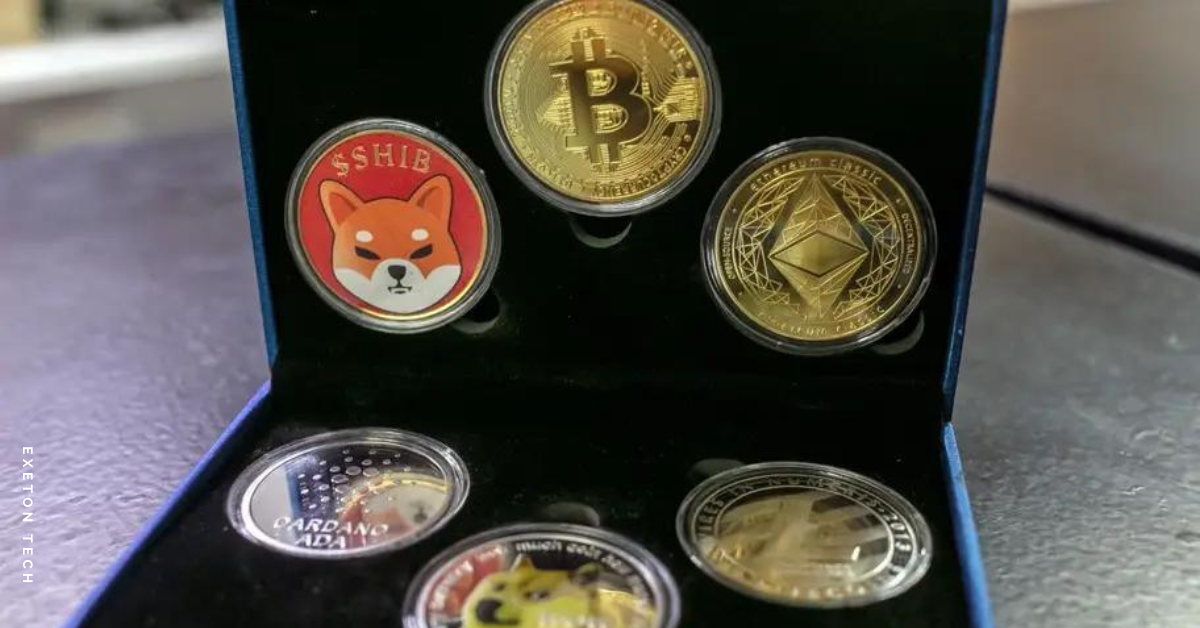Bitcoin, widely recognized as the pioneering cryptocurrency, emerged in 2009, setting the stage for a new financial era. However, the digital currency landscape extends far beyond Bitcoin, featuring a diverse array of “altcoins,” which are essentially alternatives to Bitcoin.
While Bitcoin remains the most prominent in terms of market presence and value, other cryptocurrencies have steadily gained traction. These digital currencies are ranked based on their market capitalization, a metric that represents their total value in U.S. dollars.
As of November 7, 2023, according to data from CoinMarketCap.com, several cryptocurrencies have established significant market caps, showcasing the growing interest and diversity in the crypto market beyond Bitcoin.
Largest cryptocurrencies by market cap
1. Bitcoin (BTC)
- Price: $34,769
- Market cap: $679 billion
Bitcoin, the inaugural digital currency, was conceptualized by an individual or group under the pseudonym Satoshi Nakamoto in 2009. This pioneering cryptocurrency has experienced significant fluctuations and challenges throughout its existence. Despite its early introduction, it wasn’t until the year 2017 that Bitcoin gained widespread recognition and entered the mainstream discourse regarding electronic currencies.
2. Ethereum (ETH)
- Price: $1,875
- Market cap: $225 billion
Ethereum holds the position of being the second most prominent cryptocurrency platform in the digital currency landscape. This innovative system allows the utilization of ether for a multitude of purposes. What sets Ethereum apart and enhances its popularity is its feature of smart contracts, offering a unique and efficient way to manage transactions and agreements in the cryptocurrency realm.
3. Tether (USDT)
- Price: $1.00
- Market cap: $86 billion
Tether is designed to maintain a constant value of one dollar per coin, hence classifying it as a stablecoin. This category of digital currency links its market value to a predetermined asset, commonly the U.S. Dollar, to ensure stability in price.
In the cryptocurrency market, Tether frequently serves as an intermediary for traders transitioning between different cryptocurrencies. Instead of converting back into traditional currency like dollars, traders often opt for Tether. However, there are concerns regarding Tether’s financial backing. Critics suggest that Tether might not have an adequate reserve of dollars to support its value, potentially relying on unsecured loans instead.
4. BNB (BNB)
- Price: $246.53
- Market cap: $37 billion
Binance Coin (BNB) is a digital currency issued by Binance, one of the world’s foremost cryptocurrency exchanges. Initially introduced to offer trading discounts on the platform, BNB has evolved to serve a broader role. It is now utilized for a variety of transactions, including payments and the purchase of various products and services. This expansion of its utility reflects the growing versatility and acceptance of cryptocurrencies in the global market.
5. XRP (XRP)
- Price: $0.6788
- Market cap: $36 billion
XRP, originally established under the name Ripple in 2012, presents a versatile payment solution that supports transactions in various global currencies. It’s particularly effective for international money transfers, utilizing a decentralized mechanism to enable efficient and reliable payments. This feature makes it a significant tool in the realm of cross-border financial transactions.
6. USD Coin (USDC)
- Price: $1.00
- Market cap: $24 billion
USD Coin operates as a stablecoin, maintaining a consistent value equivalent to the US dollar. This stability in value is a key feature of its design. The currency is backed by assets of equivalent worth, ensuring its stability. These backing assets are held in accounts managed by regulated banks in the United States, adding an extra layer of security and trustworthiness to the currency.
7. Solana (SOL)
- Price: $41.67
- Market cap: $18 billion
Solana, which debuted in March 2020, has gained recognition for its rapid transaction capabilities and robust platform designed for web-scale applications. This digital currency, referred to as SOL, has set a maximum limit of 480 million coins for its total supply.
8. Cardano (ADA)
- Price: $0.3452
- Market cap: $12 billion
The Cardano platform, which supports the ada cryptocurrency, was developed by one of Ethereum’s co-founders. It incorporates smart contracts, facilitating identity management and other functions.
9. Dogecoin (DOGE)
- Price: $0.07335
- Market cap: $10 billion
Initially created as a humorous response to Bitcoin’s success, Dogecoin, with its Shiba Inu dog meme inspiration, is unique in its approach to digital currency. It doesn’t cap the total number of coins, allowing for unlimited issuance. This cryptocurrency is used for various transactions, including payments and money transfers.
10. Tron (TRX)
- Price: $0.09671
- Market cap: $9 billion
Tron, established by Justin Sun in 2017, aims to use blockchain technology and applications to create a decentralized internet. According to CoinMarketCap.com, Tron boasts the world’s largest circulation of stablecoins.
11. Toncoin (TON)
- Price: $2.45
- Market cap: $8 billion
The encrypted messaging service Telegram introduced Toncoin in 2018, which was later taken over by the TON Foundation following Telegram’s withdrawal from the project. In 2023, Toncoin’s value saw a significant surge after Telegram announced plans to incorporate a TON-based wallet into its service.
12. Chainlink (LINK)
- Price: $12.85
- Market cap: $7 billion
Chainlink, founded in 2017 by Sergey Nazarov and Steve Ellis, bridges blockchain-based contracts with external data sources. Hosted on the Ethereum platform, Chainlink serves as a blockchain abstraction layer, receiving recognition from industry experts for its innovative approach.
Conclusion
The cryptocurrency market is often compared to the unregulated frontiers of the Wild West, with increasing oversight from the US government. The market is characterized by high volatility, as seen throughout 2022 and continuing into 2023. New investors face a steep learning curve, often competing against seasoned traders. It’s advisable for individuals to invest cautiously, limiting their exposure to funds they can afford to lose.
Editorial Disclaimer: It’s essential for investors to conduct thorough research and consider independent strategies before making any investment decisions. It should also be noted that past performance of investment products is not a reliable indicator of future price trends.


5 thoughts on “12 most popular types of cryptocurrency”